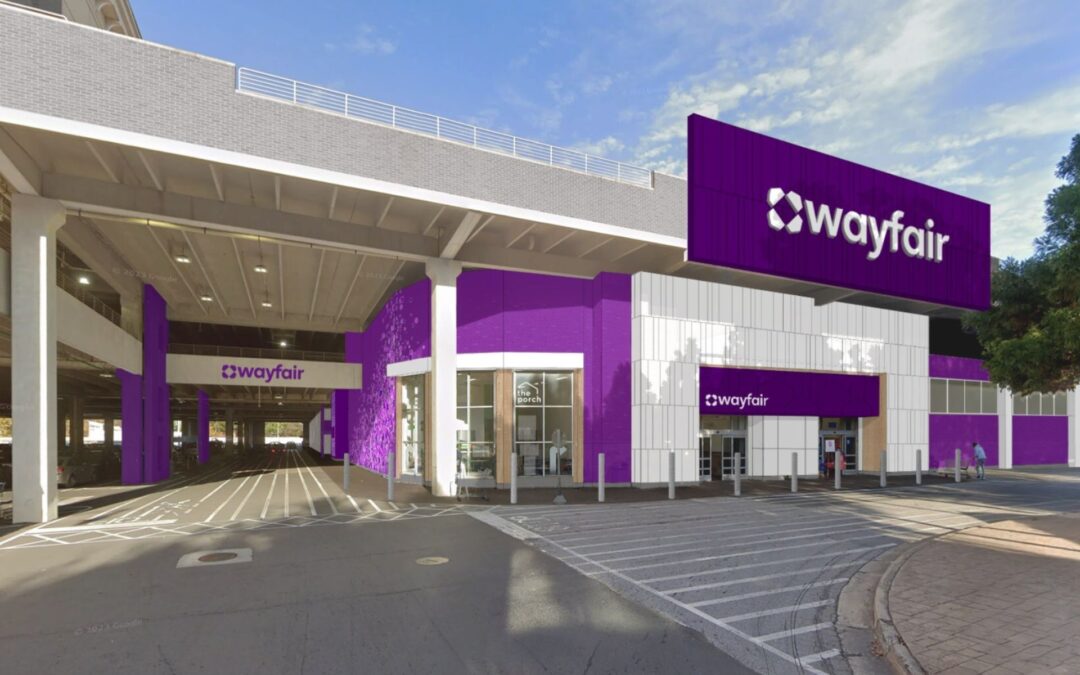Wayfair announced that it had a first-quarter loss as it adjusts to an environment where the COVID-19 pandemic is a lesser factor and other macroeconomic and political developments are pressuring operations.
Wayfair posted a net loss in the quarter of $319 million, or $3.04 per diluted share, versus net income of $18 million, or 16 cents per diluted share, in the year-previous quarter.
Adjusted for one-time events, net loss was $206 million, or $1.96 per diluted share, compared to net income of $122 million, or $1 per diluted share, in the year-before quarter.
Still, Wayfair’s loss was less than anticipated in the analyst consensus estimate published by MarketBeat, which was for $2.43 per adjusted diluted share. Revenues matched the estimate.
Net revenue was $2.99 billion, Wayfair reported, versus $3.48 billion in the year-prior quarter. Loss from operations was $310 million versus income from operations of $26 million in the quarter a year earlier.
U.S. net revenue was $2.54 billion, down 9.9% year over year, the company indicated.
In a conference call, Niraj Shah, Wayfair’s co-founder, co-chairman and co-CEO, noted that, although consumer spending is still climbing for retail overall, shoppers are spending more on non-discretionary categories and experiences such as travel even as international events and inflation had a negative effect. In addition, seasonal demand has been muted with a slower start to spring weather in much of the United States having an effect despite some building traction.
On the plus side, Wayfair had its most successful Way Day promotion ever, demonstrating consumer interest in the home category, Shah said. The April 27 and 28 event produced two of the four largest sales days in Wayfair’s history, he added.
Wayfair is used to moving and pivoting quickly to mitigate difficulties confronting the company, Shah said. More broadly, rising energy prices that have been a headwind to shipping and fulfillment costs are moderating while global logistics congestion is easing. On-site product availability has improved by 10 percentage points since the trough during the worst of the recent shipping tie-ups, while delivery times have improved by more than 10% for small parcels and more than 20% for large parcels year over year, he said. As logistics begin normalizing, suppliers have been thinking more strategically about inventory management and that should accrue to Wayfair’s benefit, Shah said. The company’s business model is at its best when supply meets or exceeds demand. Poor availability, significant degradation of delivery speed and cost pressures have weighed on demand. As those factors began in 2022, Wayfair has taken share, he asserted.
Another consequence of the reverse, Shah said, has been more producer interest in selling on Wayfair. The interest is due in significant part, he said, to the value suppliers can derive from using Wayfair’s Castlegate system from consolidation in Asia and ocean freight forwarding through to storage and fulfillment, and last-mile logistics. Wayfair has almost doubled the number of suppliers selling on the platform since 2019, with many of its newer suppliers now discovering Castlegate and the advantages it can offer, Shah said, and Wayfair expects increased vendor use across its logistics services as the year goes on. Wayfair is promoting education, simplifying the supplier onboarding process and bundling services to facilitate entrance to the Castlegate system.
On another front, Shah pointed out Wayfair will open its first physical store under what has been the online-only Allmodern banner. store. He said Wayfair is excited to begin to showcase its specialty retail brands in new formats and to optimize the bricks and mortar in-store shopping experience for customers. The company scheduled its first Josh & Main store for a debut later this year and the first under the Wayfair banner next year. Shah described the physical retail locations as a gateway into the Wayfair ecosystem that builds on and complements the online shopping experience
In announcing the financial results, Shah said, “While multiple macro cross-currents are filtering through the global economy, consumer health remains relatively strong. Shoppers are still very interested in the home category, as evidenced by our most successful Way Day event ever last week. The companies that will be most successful in navigating this dynamic environment are those that can act with agility, balancing near-term demands with outsized longer-term opportunities, which is an apt description for Wayfair. We are well-positioned to outperform and gain share from here, particularly as supply chain constraints ease, and we are not losing sight of the massive market opportunity still ahead.”





